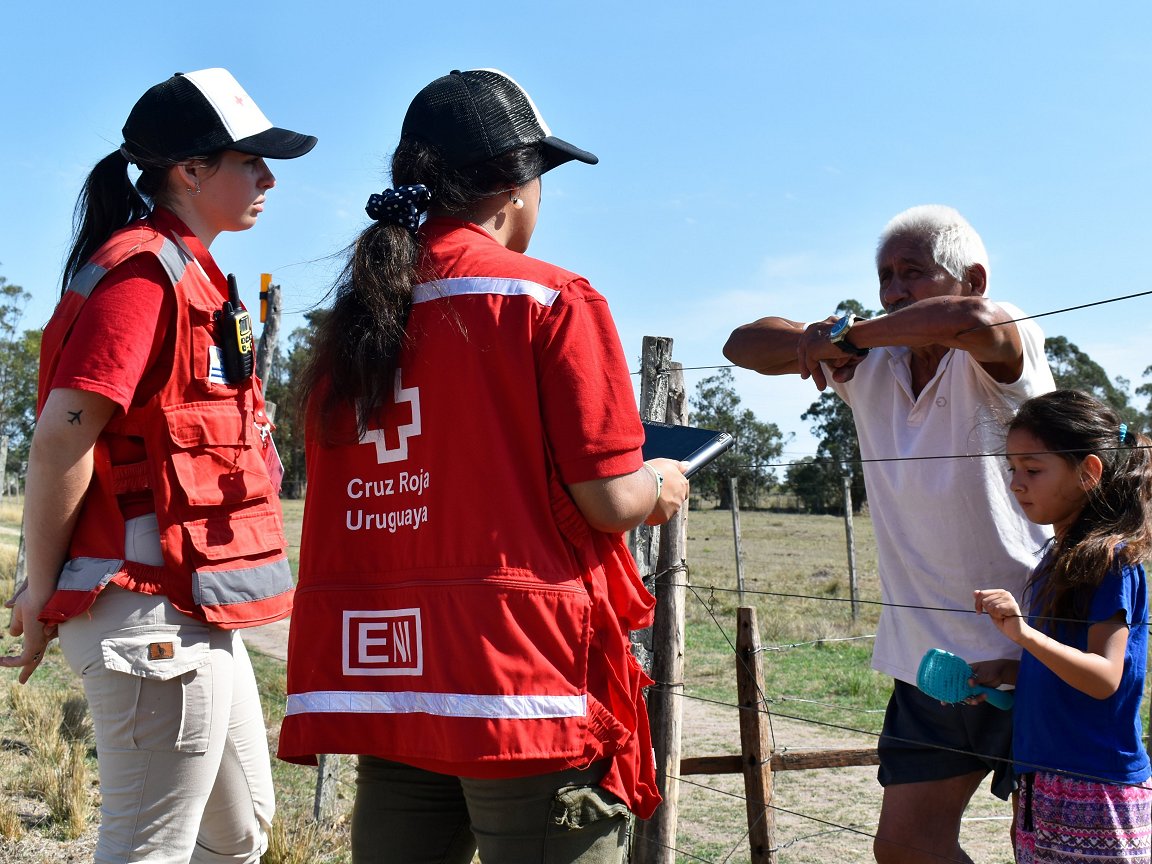
Relief operation for 12,000 people affected by Uruguay drought after DREF for Red Cross assessment

By the Climate Centre
The Uruguayan Red Cross earlier this year was supported by the IFRC’s Disaster Response Emergency Fund (DREF) to conduct a needs assessment of the nationwide drought, and has now produced a response plan to assist 12,000 vulnerable people in the most severely affected departments of Tacuarembó, Cerro Largo, Florida, Lavalleja and San José.
The government in January had asked the Red Cross for help in evaluating the impact of the drought at community level: an initial DREF of 43,000 Swiss francs to analyse humanitarian needs and develop a response plan followed; that was supplemented this week by a four-month plan of action and a second grant for response of nearly 340,000 CHF.*
The new operational strategy published on Monday says: “The lack of rainfall recorded since September 2022 has caused a significant reduction in the availability and access to water in the country, which in turn has been affected by the presence of the La Niña phenomenon in the region, and the increase in temperatures in the summer seasons.”
The southern-hemisphere summer has been the driest locally in the last 42 years, it adds.
‘Irrecoverable’ losses
One impact has been food prices: tomatoes, lettuce, carrots, cucumbers and watermelons have gone up by 40 per cent, while the price of nationally popular foodstuffs has increased by an average of 20 per cent.
In February the Rural Association of Uruguay described the damage to soybean and corn crops as “irrecoverable”, saying production would be affected as far ahead as 2026.
The National Society’s assessment – conducted both through interviews, field missions (photo), and analysis of secondary data – indicated that 2.3 million people are affected by a protective ban on the use of water for non-essential purposes.
Additionally, just over 400,000 people live in the departments most affected by water shortages, of whom 20,000 are in need of immediate humanitarian assistance, centred on water and sanitation, and livelihoods.
Red Cross interventions over the next few months, supported by latest DREF grant, will centre on these areas, as well as unearmarked cash assistance to people.
Emergency operations
The assessment also disclosed that families have been taking unusual or desperate measures to cope with this situation: asking for help from institutions, relatives or friends; unplanned loans; selling livestock; using household budgets originally planned for other things; buying drinking water; and using resources set aside for the winter.
The Uruguayan Red Cross activated its emergency operations centre at the start of the drought emergency, and its assessment was conducted in coordination with the National Emergency System.
The IFRC Country Cluster Delegation in Argentina which works with the Southern Cone nations is maintaining close operational coordination with the Uruguayan Red Cross and the Americas Regional Office in Panama.
The Uruguayan Institute of Meteorology is most recently forecasting a 40 per cent chance of below average rainfall for the north of the country – potentially aggravating the situation in at least two of the provinces that are the focus of the Red Cross operation.
*Grants for humanitarian assessment were officialized last September under the DREF Evolution, the smaller allocations helping National Societies gather information from the field for later response.
A Uruguayan Red Cross humanitarian assessment for drought – commissioned by the government in January – has now concluded that 2.3 million people are affected by a protective ban on the use of water for non-essential purposes. (Photo: Uruguay Red Cross via Twitter)